What to see
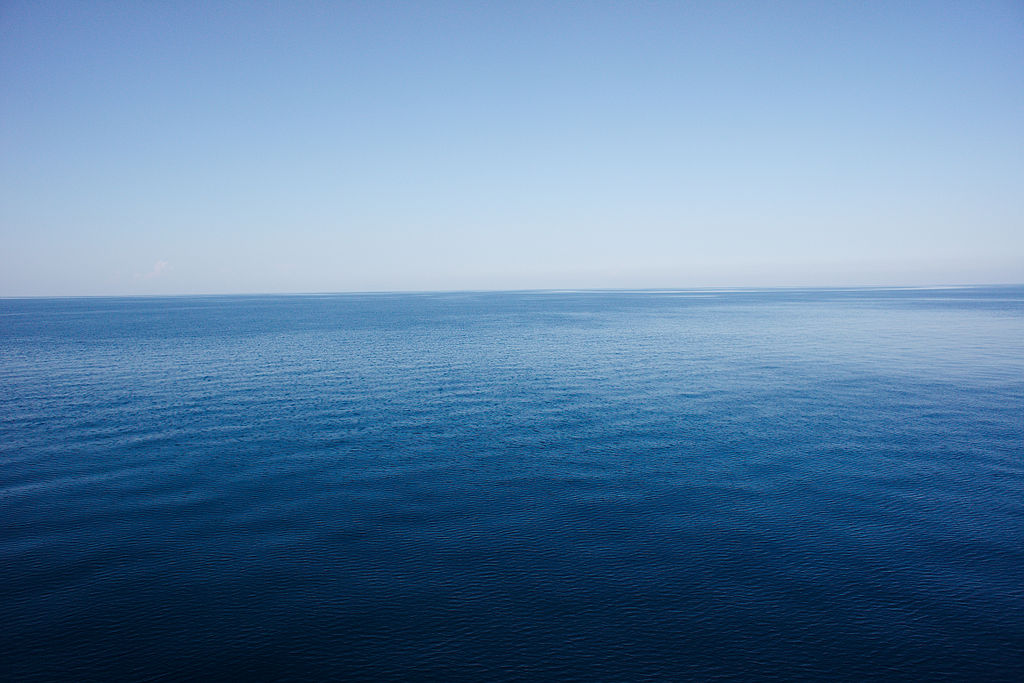
Sea
The resort is located in an area from which the coast full of beaches is easily accessible. The closest beaches are those of the city of Trani and those of the city of Bisceglie. The beaches of Trani are characterized by the presence of sand while those of Bisceglie are based on pebbles or rocks. Along the beaches, you can choose to access public areas or take advantage of the hospitality of private beaches. In both cities it is possible to take advantage of boat rental.
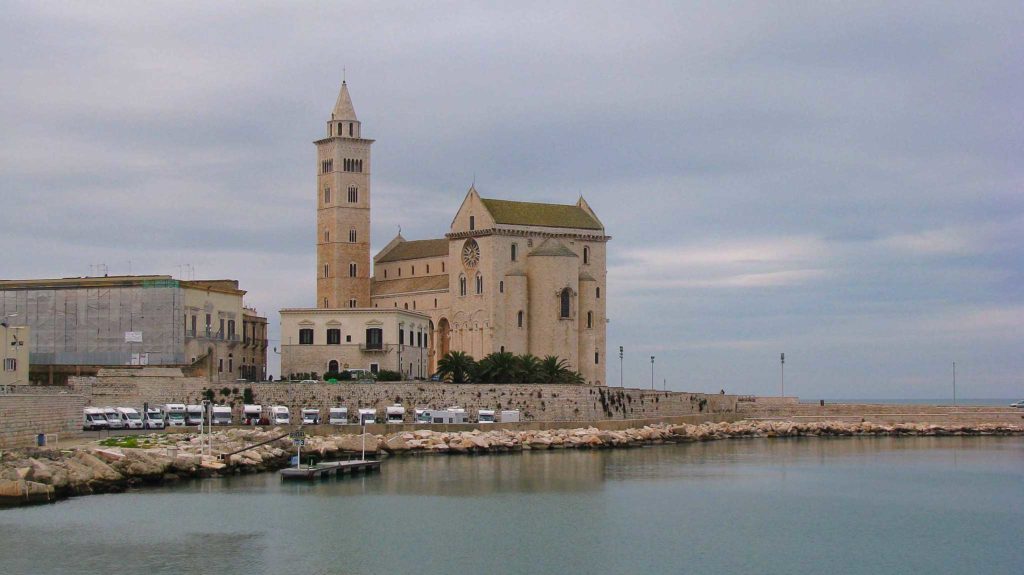
Cathedral
An unmissable stop for the visitor, it rises very high on a tongue of land silhouetted against the blue and a thousand luminescent tones of the sky and the sea of Trani. The position of the cathedral of Trani has made it one of the most famous in the world; made of clear limestone, supplied by the generous quarries of the place, it is the sentinel of one of the most important seafaring cities of Puglia, and is an excellent example of Apulian Romanesque architecture.
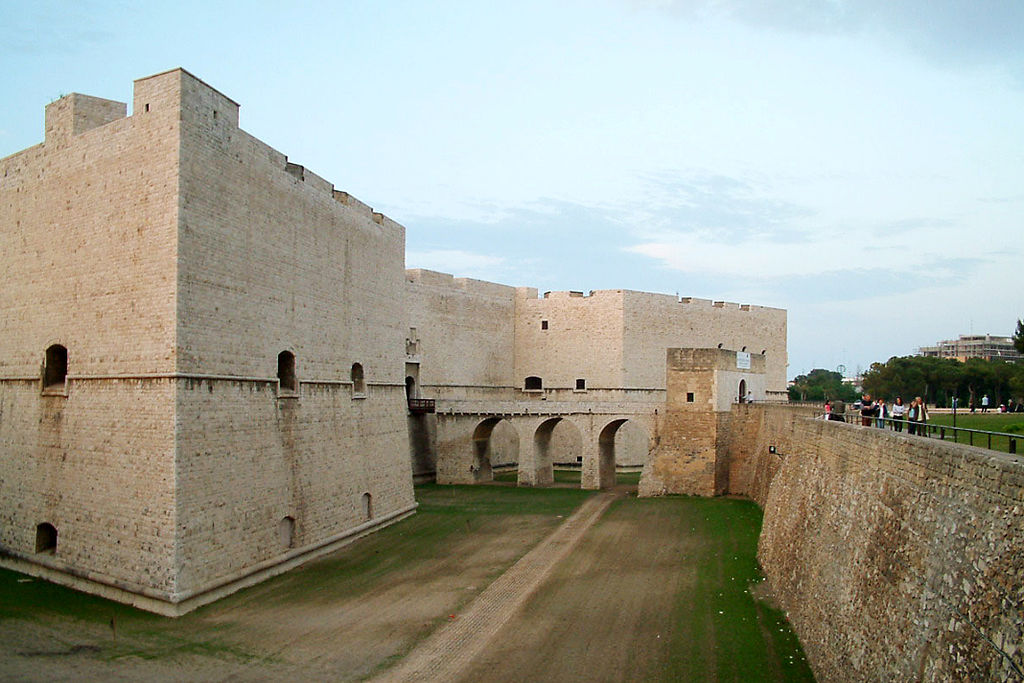
Swabian Castle
It is not possible to accurately date the origin of the castle of Barletta, whose current appearance is clearly that of a sixteenth-century fortress but whose origin goes back a long way over the centuries.
Local historians speak of a “mighty fortress built by the Normans in the second half of the 12th century. in defense of the city, the military stronghold of the Ofanto defensive line “when” there were frequent raids by pirates who plundered the Adriatic coast “.
The first written document is in a decree of 1240 with which Frederick II included the building among the castles of the Giustizierato di Terra di Bari.
With the Angevins the Castle, like the rest of the city, had a new layout by Pietro d’Angicourt, the famous French architect who contributed to the spread of the Gothic language in southern Italy.
The Aragonese returned the building to its original defensive vocation, making it an impregnable fortress and a real war machine.
Ferdinand I of Aragon in 1461, the day after his coronation in the adjacent cathedral, besieged by pro-Angevin armies, took refuge there until the intervention of Scandeberg.
In 1527, as a plaque at the entrance recalls, even Emperor Charles V, to whom the current layout of the fortress is ultimately due, took part in the history of the building, adding the moat and the 4 corner bastions.
Subsequently, there were no major interventions until 1867 when during a public auction the Municipality of Barletta bought it for the sum of L.30,000, then granting it to the military authority which made it a warehouse and a prison
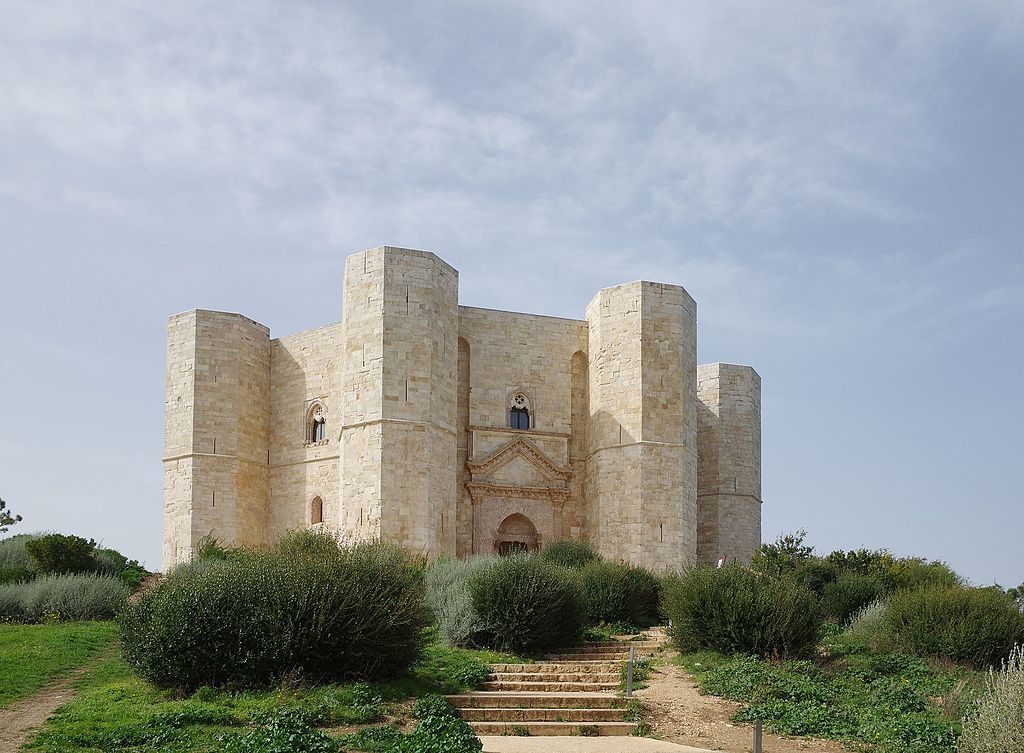
Del Monte Castle
Castel del Monte is one of the 49 Italian sites that Unesco included in the World Heritage List in 1996.
Built by Frederick II of Swabia in the 13th century, the castle dominates, with its massive octagonal structure, the small stretch of the western Murge located 18 km from Andria. Castel del Monte Universally considered a brilliant example of medieval architecture, Castel del Monte actually combines different stylistic elements, from the Romanesque cut of the lions at the entrance to the Gothic frame of the towers, from the classical art of internal friezes to the defensive structure of architecture up to the delicate Islamic refinements of its mosaics.
Built around 1240, Castel del Monte became the permanent seat of the court of Frederick II of Hohenstaufen, who became ruler of the Kingdom of Sicily just three years ago. The monarch, nicknamed “Stupor Mundi” for the eclecticism and vastness of his culture, bequeathed to his castle all the mystery that surrounded him.
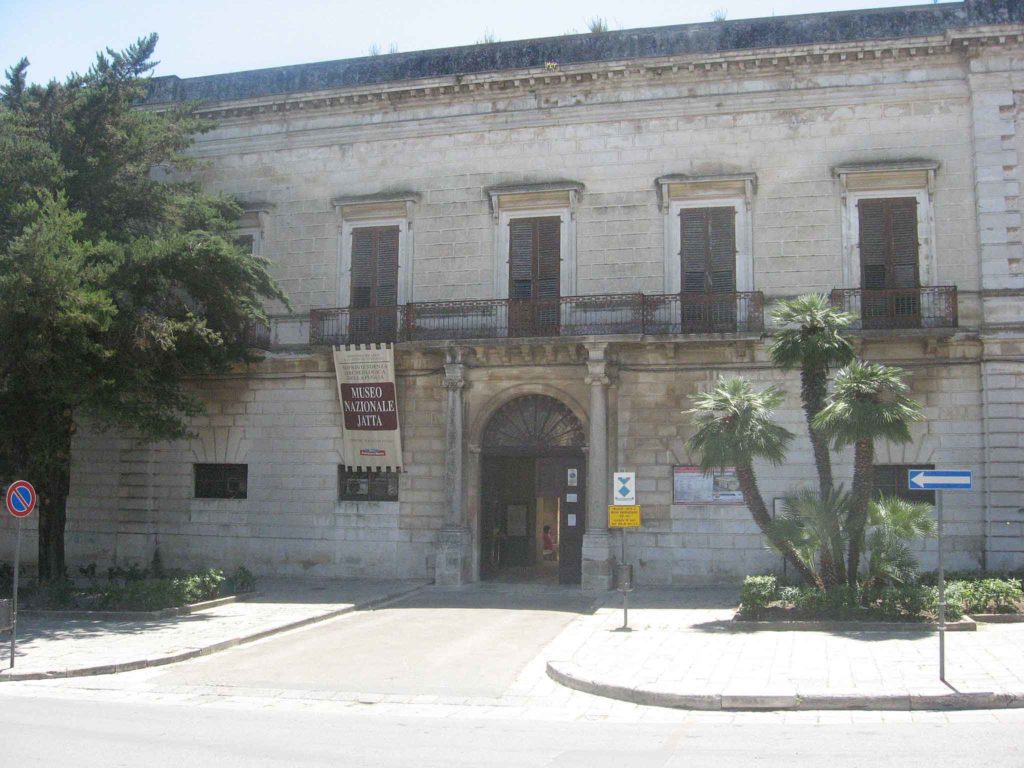
Jatta Museum
The Jatta National Archaeological Museum of Ruvo di Puglia was set up in some rooms of Palazzo Jatta and represents the only example in Italy of a nineteenth-century private collection that has remained unaltered from the original museographic concept. The finds preserved in the museum were collected by the archaeologist Giovanni Jatta in early nineteenth century, it was subsequently enriched by the homonymous nephew and was sold to the state in the twentieth century
The rich museum collection includes artifacts by the best known Greek and Apulian ceramographers and painters. In the first room you can admire figured and architectural terracotta, Daunian trozzelle and black painted vases.
The tour continues in the second room with the large mask crater, the work of the Baltimore painter. In the Room of the Rhità mugs with zoomorphic decorations are exhibited and the last exhibition section is dominated by the most important vase in the collection, the Attic red-figure krater decorated by the painter Talos, datable to the 5th century BC.

Stay updated
Subscribe to newsletter

